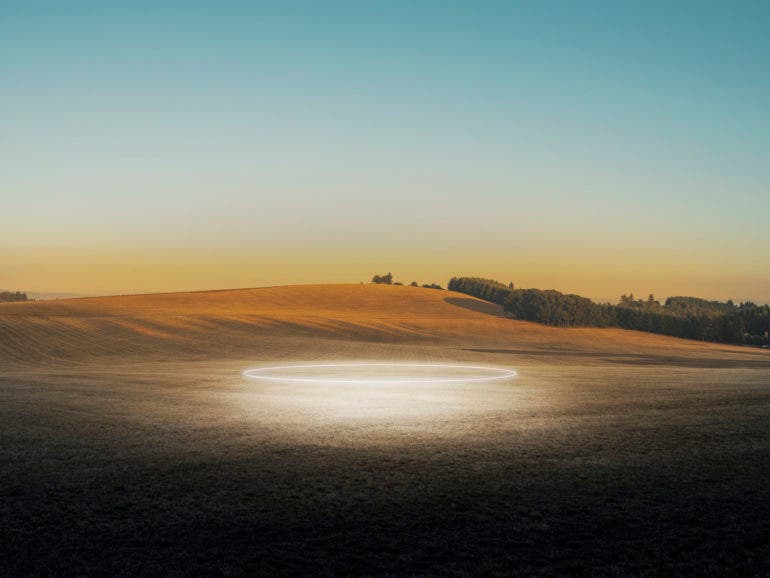Ludwig Favre Pays Homage to The Natural World in Haunting Photos
“I was very close to a pine forest in Oregon when I found myself completely alone,” the photographer Ludwig Favre tells me. “There was no one around–not even a single noise.” The silence and darkness setting his nerves on edge, he was well-aware that he was “in the middle of nowhere” in an area he didn’t know. He worried his car might break down; the possibility of an unwanted encounter in the woods ran through his mind. But in the open air, inhaling the scent of the evergreen trees, he continued to work–until slowly, the first rays of sunlight appeared on the horizon.
Want to get your work featured? Here’s how to do it!
Favre started his journey as a photographer at the age of six, when his father taught him how to use film and chemical baths to create something out of nothing. Six years ago, after a career as an art director, he was able to transition into working as a photographer full-time. His dad passed away when he was still very young, but the passion he instilled in Favre has remained present throughout his life.
Three years ago, the artist embarked on a journey to remote landscapes in Oregon and Iceland, some of them thousands of miles apart but united by a sense of eerie calm and sublime beauty. Favre is well-known for his architecture and city photography, so a return to nature marked a departure of sorts. “I love cities and their energy, but I also need to find peace and quiet,” he admits. “Nature soothes me and allows me to refocus on essential things.”
He brought with him a DJI drone and LED light, which he flew in circles across the vast expanses of land and water. Using the drone as his light source and implementing long exposures, he captured glittering halos hovering just above the surface of the Earth, illuminating the scene below. The result is NEON, a collection of landscape photographs that blur the line between the earthbound and the supernatural.

The essential gear of Ludwig Favre
Favre tells us:
“I used a Lumix camera, a wide-angle, and a DJI drone, and then I did some post-production work with Adobe Lightroom and Photoshop. I also used a tripod to take these pictures, which are long exposures–two times: one with and one without the drone.”
Favre scheduled the shoots for the first light of morning, setting up while it was still dark. “The biggest technical challenge was flying the drone and making a perfect circle while having sufficient exposure time to create the halo effect,” he explains. “It was a race against time, because I also had to monitor the ambient light, which increased rapidly as the day broke.”
The artist’s single-minded focus and race against the sun did result in at least one mishap. After leaving his eyeglasses on the roof of his car during a shoot, he realized they’d fallen into the road. The moment he reached for them, however, another car appeared and ran the glasses over, shattering them beyond repair. He recalls the incident now as a funny behind-the-scenes anecdote, but perhaps it also speaks to some of the spookiness that comes with traveling back roads in the dark. Nothing is exactly what it seems, and something’s always lingering just around the bend.

In NEON, the choice of a halo, as opposed to any other shape, was deliberate. “The circles of light symbolize the transition of darkness into the light, imbuing the ground below with a divine dimension,” the artist says. “The natural world protects us and shelters us, but we still do not respect it. The goal was to show that our planet is fragile and that we really have to be aware of this chance we have to live in such a beautiful place.”

And these places are vulnerable. In 2020, more than 2,000 fires burned 1.2 million acres in Oregon; this spring, the Bootleg Fire alone ravaged more than 400,000 acres. Over the last two decades, Iceland’s glacial cover has decreased by 300 square miles–about the size of New York City. These are places where the effects of climate change are keenly felt, a fact that infuses these seemingly timeless photographs with a palpable sense of urgency.
The landscapes Favre selected also carry with them their own spiritual histories and folklore. Throughout the years, people have told stories about mythical beasts in Oregon, from massive river serpents to werewolf-like creatures. Iceland has its own legends of elves, trolls, fairies, and ghosts. In NEON, Favre does not allude to any specific myth or story, but his suspended halos point to something beyond the mortal realm, calling to mind the many mysteries that nature keeps hidden from view. Ultimately, the artist says the series is about hope–rooted in the belief that, despite our mistakes, the Earth will continue to protect us from harm.

All photos by Ludwig Favre. Used with permission. For more from Favre, visit his website. You can follow along on Instagram at @ludwigfavre, on Facebook at @ludwigfavrephotography, and on Behance at @LUDWIGFAVRE.